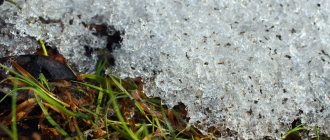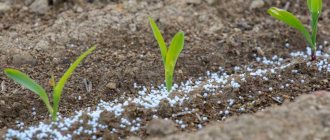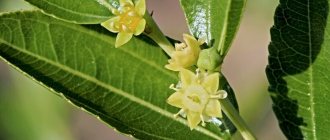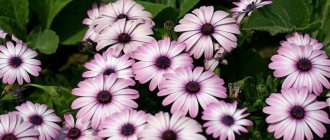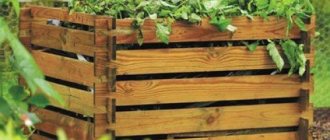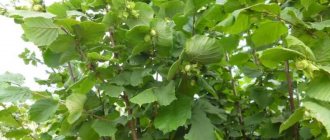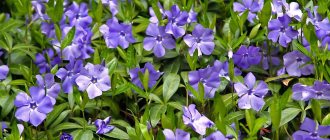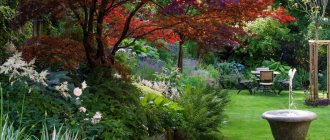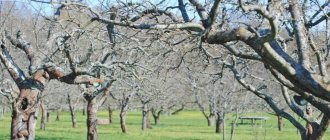Why is spring feeding necessary?
What does fertilizing the soil do in spring? Is it necessary to do this every year? Let's figure it out together.
At the beginning of the growing season, it is important to give plants the opportunity to grow quickly, effectively resist various diseases and ultimately bring maximum benefit. The purpose of spring feeding is to saturate the soil with useful substances and create favorable conditions for growth, flowering and fruiting. Even the most nutritious lands are sooner or later depleted, which, of course, negatively affects the well-being, appearance of trees and shrubs and their ability to produce tasty fruits.
To prevent this from happening, minerals and organic matter should be added. Mineral supplements - annually, organic - once every two years.
Why do I fertilize my garden in the spring?
I pay special attention to the spring fertilization of the plot: garden crops can quickly grow, fully develop, and form ovaries only in soil saturated with nutrients. Timely fertilization also protects seedlings from stress when moving to a permanent place and prevents diseases of young seedlings.
The most important element for spring feeding is nitrogen. It accelerates the growth of young plants and promotes the active formation of greenery. However, nitrogen is needed only for the initial stage of development. In summer, it is used only when necessary - if there is an excess of the element, the seedling goes into the tops to the detriment of fruit formation.
The second most necessary spring feedings are potassium and phosphorus. These elements are added both in mineral and organic formulations.
I recommend starting spring fertilization in early spring, but after the snow melts. Sprinkling products over snowdrifts is ineffective - valuable substances “float away” from the site along with meltwater. I do not recommend relying on the principle “the more, the better.” An excess of almost any of the useful substances in the substrate leads to the opposite effect - inhibition of growth, stunting, painful plantings, inhibition of bud ovaries, and fruit formation.
Organic fertilizers
What organic fertilizers are used most often during spring gardening? Read more carefully.
Compost
Compost is decomposed plant residues and household waste. The most important thing when harvesting is to ensure a high temperature in the compost pit. The speed of decomposition processes depends on this. The optimal temperature is 40 degrees. The contents of the pit usually consist of mowed grass, leaves, dried flowers, tops, sawdust, weeds and food debris (except fat and bones). The “ingredients” are laid out in layers.
Manure and chicken manure are often added to compost. When adding green grass, mix it with dry leaves and wood. It will increase the quality of organic fertilizer, which, with the right approach, can replace mineral additives, humus, and phosphorus flour. It is administered at the rate of 2 kg per 100 kg of waste. If peat or other acidic organic matter is present, add ash.
In order for the compost to “ripen” correctly, experts advise alternating dry and wet layers. The rotting process will go twice as fast if you sprinkle each layer with soil. Nettle, comfrey and legume waste are used for the same purpose. Don't forget to water the compost, but make sure the water doesn't stagnate.
There are many recipes for creating compost. But three are recognized as the most popular.
Recipe No. 1 . Peat manure compost. For preparation (as the name implies) you will need peat and manure (in a 1:1 ratio). The thickness of each layer is 25 cm. You can add phosphorus flour. Cover the pile with a tarp or dark film and leave for about 7 days.
Recipe No. 2 . Vermicultured compost (vermicompost). This extremely nutritious fertilizer is prepared in early February. Fill a wooden box with holes for ventilation with straw, paper and grass. Add soil on top and water. The next day, place earthworms in the box. Periodically pamper the residents with potato peelings, shells, apple peels, and tea leaves.
Recipe No. 3 . Prefabricated compost. Prepared in summer. Tops, grass, tea leaves, peelings and other food waste are poured into containers made of wood or plastic. Do not forget to gradually add lime, phosphorus flour and slurry to the resulting mixture. The container with the collected compost cannot be covered, because... it contains a lot of nitrogen.
Manure
Pet excrement mixed with straw and hay scraps contains nitrogen, potassium, calcium, phosphorus, and magnesium. They are added to the soil in a rotten state, when the amount of harmful impurities is reduced to a minimum. How to achieve this? Cover the pile with plastic and forget about it for a year. When the time comes, use a rake to evenly distribute the pieces over areas where lawn grass, berry bushes and fruit trees grow.
Fresh manure cannot be applied to the soil - aggressive components will destroy young plantings. The exception is the arrangement of warm ridges and mulching of raspberry bushes.
Humus
Humus is compost or manure that has been left for more than 2 years. It looks like a loose mass with a pronounced earthy smell. This universal fertilizer is ideal for feeding any garden crops. It is used for mulching and for preparing soil for seedlings. Copes well with the role of hole filler for particularly demanding plants.
Bird and rabbit droppings
It is superior in nutritional value to cow manure, but is practically not used in its pure form. Included in complex organic fertilizers prepared with your own hands. To do this, the litter is diluted with water in a ratio of 1:10. The resulting infusion is diluted again (1 part liquid to 4 parts water) and mixed with compost or humus.
Ash
A rich source of potassium, reducing soil acidity and enriching them with boron, phosphorus, and manganese. Used as an additional component of fertilizers. Ash is added to manure and litter, herbal infusions and compost. Fertilizing with ash is especially useful for tomatoes, potatoes and bell peppers, but carrots do not really like it. The greatest value is the ash formed after burning straw, but if this is not available, you can use ordinary wood ash. Remember, ash from young branches is richer in composition than ash from old trees. If we compare the nutritional value of the ash of deciduous and coniferous trees, then the first is healthier.
Peat
If you dream of a dense and dense lawn on your garden plot, then you cannot do without peat. Remove the top layer of turf, sprinkle peat on top, lightly “powder” it with soil and compact it. After 24 hours, start planting seeds. The peat substrate promotes the rapid and uniform growth of lawn grass. Peat is applied to apple trees older than 3 years; it is also actively used for mulching around tree trunks.
Where can I buy
Today, in order to purchase high-quality fertilizer for the garden, it is not at all necessary to run to the shops. Just visit the official website of the Agro-Center online store. Here you can find the fertilizer you need. The range of universal fertilizers in the store is large and varied. The catalog is constantly updated, and the prices are pleasantly surprising.
Absolutely all drugs sold in the Agro-Center online store have quality certificates, which are proof of the authenticity of the products. The store employees are qualified specialists who know a lot about agricultural chemistry and are always ready to help in choosing products, placing an order and delivery.
Cons of organic fertilizers
Organics have many positive qualities - ease of preparation, environmental friendliness, and a wide range of applications. But there are also disadvantages and you need to be aware of them.
- An “overdose” of organic matter leads to the death of young, immature plants. In addition, an excess of such fertilizers negatively affects the taste of the fruit;
- the danger of infesting fields with weeds and plantings with fungi;
- unbalanced content of nutrients.
Organic fertilizers have an unpleasant, pungent odor. Delivery and distribution of them across the land requires large financial and power costs.
Why feed the soil?
The condition of the soil is what primarily determines the quality and quantity of the crop. Even if you follow all the rules for caring for crops, for example, watering or pruning on time, but the soil will be depleted, you will not be able to get a good result.
Continuous exploitation of the soil has led to a partial loss of macro- and micronutrients that should be contained in it. Annual planting of plants in the same place, climate change, and a decrease in groundwater levels have changed the structure and condition of the soil for the worse. That is why it is so important to feed it in all periods - spring, summer and autumn.
Timely feeding makes it possible
:
- restore the structure;
- saturate with the necessary amount of nutrients;
- increase fertility;
- increase the quality and quantity of collected fruits, vegetables and berries;
- extend the shelf life of the crop;
- increase the level of frost resistance of perennial plants and their immunity.
It should also be noted that in fertilized soil the air exchange process occurs more efficiently and continuously, which has a positive effect on plants. In fertilized, healthy soil, microorganisms develop better, which also play a significant positive role.
Mineral fertilizers
Spring feeding involves adding not only organic matter, but also minerals. If you saturate the soil exclusively with organic additives, then the plants will suffer from a lack of potassium and phosphorus. This will lead to a decrease in growth rate and deterioration in fruit quality.
But before applying fertilizers, you should familiarize yourself with certain standards:
- nitrogen fertilizers (calcium and ammonium nitrate, urea) are applied at 300-350 grams per 1 m2;
- potassium (potassium chloride, potassium salt, potassium sulfate) - 200 grams per 1 m2;
- phosphorus (superphosphate) - 250 grams for every 1 m2.
When using factory-made granular fertilizers, carefully read the instructions on the package. Manufacturers describe the dosage in detail depending on the characteristics of the crops grown.
Many gardeners are wary of “chemicals” packaged in colorful bags. But you shouldn't be afraid of her. Complex mineral supplements, produced in the form of liquid and granules, are designed to fully satisfy the needs of plants for all microelements.
How to recognize which mineral fertilizers are missing? By and large, this is not difficult to do. Carefully examine the plants and everything will become clear.
Mineral fertilizers come in different types - for different soil and plant problems.
Nitrogen supplements increase the green mass of plants and increase productivity. Nitrogen deficiency manifests itself in slower growth, delayed flowering and reduced leaf thickness. Application of nitrogen fertilizers in spring is mandatory, because... This element is lacking in almost all soils.
Potassium promotes intensive growth of the root system and helps shrubs withstand sudden temperature changes. With a lack of potassium, the leaves lose their rich green tint and become pale yellow.
Phosphorus increases the speed of development and ripening of fruits. Phosphorus starvation is indicated by dull leaf color, sickly appearance of flowers and late ripening of fruits.
Ready-made mineral complexes can be either single-component or complex. They are good because they not only contain nutritional components, but also increase the defenses of plants, allowing them to effectively resist bacteria and fungi. For example, the Kristallon complex has such properties.
Factory-made fertilizers have another significant advantage - you can choose a complex for a specific plant or flower. Thus, “Bulba” is an organomineral additive that stimulates the rapid germination of potatoes. The Kemira-Universal mixture is suitable for fertilizing fruit trees and berry bushes. In spring, this fertilizer is applied in dry form.
Important tips for spring fertilizing plants
We have figured out WHAT to fertilize the land, but this is clearly not enough to achieve a positive result. It is important to know HOW to supplement correctly.
For spring feeding, choose complex mineral fertilizers with a high nitrogen content. Look carefully at the packaging. In the abbreviation NPK, opposite the first letter N, corresponding to nitrogen, should be the largest numerical value.
Do not fertilize too early; wait until the snow cover melts. Some gardeners break this rule and make a mistake - useful substances “leak away” along with the snow. Fertilizers in granules are applied in March - they take a long time to dissolve, liquid fertilizers - in April-May. If the soil is too dry, water it before planting.
You need to fertilize where there are a lot of roots. That is, not under the very trunk of the tree, but around it. After adding granular nutrient mixtures, the soil must be loosened.
When applying fertilizers, it is important to consider the type of soil. You can determine what kind of soil you have in certain areas (acidic, alkaline or neutral) in the laboratory. This is the most reliable option, however, if there is no opportunity to give soil samples for research, you should not despair. Folk signs will come to the rescue. It has long been noted that moss, plantain and horsetail prefer acidic soils, quinoa and mustard - alkaline, clover and nettle - neutral.
Each type of soil has its own fertilizer.
Compost and grass mulch can be applied every year, and manure and litter can be applied every two years. Sawdust, which is added to organic matter, improves the flow of moisture into the deeper layers of the soil, which means it accelerates the absorption of nutrients. The depth of the bookmark is of great importance. You will achieve the greatest efficiency if you place fertilizers at the depth of the shovel blade.
Organomineral granular fertilizers are recognized as the best. They are able to dose the release of useful components to the roots - the plant receives first of all those that it urgently needs. Single-component mineral supplements require careful attention, because affect the composition of the soil (degree of salinity, acidity, etc.).
Signs of nutritional deficiency
Before you apply fertilizer to the soil, you need to understand what exactly it needs. Based on its appearance, it cannot be concluded that it lacks certain useful substances. But the plants that grow in it can tell you how and with what to fertilize the soil.
Deterioration of soil condition may be indicated by:
- bad harvest;
- late growing season;
- poor crop growth;
- unhealthy appearance of plants - new shoots do not appear, the color of the leaves is not natural, the ovaries fall off, the fruits do not ripen, and are poorly stored.
But the ideal option to determine nutrient deficiencies is to take soil samples to a laboratory. Specialists will conduct the appropriate analyzes and will be able to very accurately name the elements that are needed.
Instructions for applying fertilizers
Let's look at how to fertilize potatoes, strawberries and raspberries, fruit trees and flower beds in the spring.
Potato
For fertilizer, a point or continuous method is used. The first method is labor-intensive, because you have to add nutrients to each hole. You can’t do this kind of work alone—ideally, three people are needed. One digs a hole, the second adds fertilizer, the third puts in tubers. For fertilizer, prepare a mixture of rotted manure and ash (1 liter jar of manure and half a jar of ash for 1 hole).
Continuous application is practiced where large areas need to be treated. Fertilizers are simply scattered over the entire surface of the earth. For poor soils, compost (5 kg), superphosphate (3 kg), ammonium sulfate (3 kg), and potassium fertilizers (2.5 kg) are prepared. For fertile soils - compost (2 quintals), ammonium sulfate (2 kg), potassium supplements and superphosphate (1.5 kg each). Compost can be replaced with manure.
Strawberry and raspberry
Spring feeding will speed up the ripening of fruits, which will be brighter and sweeter than usual. Fertilizers are applied along the leaves, under the roots or between the beds. The first step is to free the bushes from weeds, loosen the soil and sprinkle with peat. Then the plant is watered with a liquid nitrogen complex, for example, Kemira (20 grams per 10 liters).
No nitrogen supplements are added for the next 14 days. After the leaves appear, feed with mineral-organic fertilizer in liquid form. Fertilizing the soil with potassium will increase the taste of strawberries.
Raspberries are one of the most picky shrubs when it comes to feeding. Requires the mandatory application of compost, peat or humus. A loose environment will ensure good air and moisture exchange, eliminating the need to weed the tree trunk soil.
If we talk about foliar application of fertilizers, we should note spraying with zinc and bromine, which has a beneficial effect on the general well-being of berry bushes.
Fruit trees
The first application of fertilizers is made before the first leaves appear. A little superphosphate is laid out near the tree trunks in early March. These periods are explained by the fact that phosphorus takes a long time to transform into a form “digestible” for trees. Organic matter (humus and ash) is introduced after the snow has completely melted and the soil has thawed. Don't forget to loosen the soil.
Complex mineral fertilizers are introduced towards the end of spring. It is desirable that they have more potassium. This will significantly improve the quality of the ovaries and improve the taste of the fruit.
Now you know what fertilizers need to be applied in the spring and how to do it correctly. Follow simple recommendations and a rich harvest awaits you in the fall. Good luck with your spring work!
https://sornyakov.net/fert/kakie-udobreniya-nado-vnosit-vesnoj-podrobnaya-instrukciya-dlya-chajnikov.html
Subtleties of choice
The result - the condition of the plants, the quantity and taste of the crop - depends on how correctly you choose the fertilizer.
It is very important to consider the following factors:
- composition of the fertilizer and its purpose. It is imperative to study the information indicated on the original packaging - it must clearly indicate which crops can be fed and the dosage of the drug, because it is individual for each plant;
- production date and expiration date;
- conditions of use and storage;
- who is the fertilizer manufacturer?
The market offers a wide range of universal fertilizers for garden and vegetable crops from different companies. There are drugs of both foreign and domestic production.
